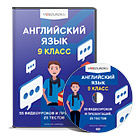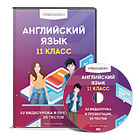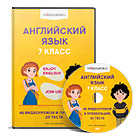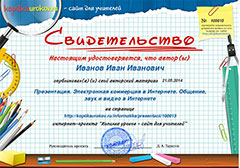| LESSON: Module 8 Lesson 1 Slow machines 1 | School: 5 school-lyceum | |||||
| Date: 6.05.2021 | Teacher name: Kulbarakov Nurbol | |||||
| CLASS: 4a | Number present: | absent: | ||||
| Learning objectives(s) that this lesson is contributing to | 4L6 understand some specific information and detail of short, supported talk on an increasing range of general and some curricular topics 4.S3 give short, basic description of people and objects on a limited range of general and some curricular topics, begin to describe past experiences on an increasing range of general and some curricular topics 4.R3 recognise basic opinions in short, simple texts on an increasing range of general range of general and some curricular topics 4.W1 plan, write and check sentences with support on a range of basic personal, general and some curricular topics 4.W7 spell most familiar high-frequency words accurately when writing independently 4.UE5 use interrogative pronouns including: who, what, which, where, whose, how many, how much, how often, how big, what kind of … to ask questions on growing range of familiar topics 4.UE12 use adverbs of time and frequency: sometimes, often, always, never to indicate when and how often begin to use simple adverbs of manner e.g. well, badly, use common –ly manner adverbs to describe actions e/g/ slowly, quickly | |||||
| Lesson objectives | All learners will be able to: | |||||
| respond correctly to some spoken, written and mimed prompts and show some control of target language in interactive question sequences To learn and talk about slow machines. | ||||||
| Most learners will be able to: | ||||||
| respond correctly to most spoken, written and mimed prompts and show some control of target language in interactive question sequences To learn and talk about slow machines. | ||||||
| Some learners will be able to: | ||||||
| recognise and use target language correctly with clear pronunciation and good comprehension of written and spoken questions To learn and talk about slow machines. | ||||||
| Previous learning | Language focus Structures: past simple; interrogative pronouns; adverbs of frequency; adverbs of manner. Language in use: / would use a photo booth to take a photo. Target vocabulary Slow machines: photo booth, coffeemachine, bicycle, computer, cassette player, typewriter washing machine • photo, press, button, handles | |||||
| Cross-curricular links | Science (Exs. 1 & 2) | |||||
| ICT skills | Using videos & pictures, working with URLs | |||||
| Plan | ||||||
| Planned timings | Planned activities | Smiles | Teacher | |||
| Beginning the lesson 4.1.4.1 | Hand out the completed Progress Report Cards for the previous module and ask the pupils to file them in their Language Portfolios. | |||||
| Presentation and practice 4.1.6.1 4.1.6.1 4.2.3.1 4.3.3.1 4.4.1.1 4.1.6.1 4.2.3.1 | Step 1 Look at the pictures. Which of the machines would you use to take a photo? to go to school? to do your homework? to make a drink? Say and write on the board: machine. Elicit/explain what a machine is. Refer the pupils to the picture and have a picture discussion. Elicit the names of the machines (A - photo booth, В - coffee machine, C - bicycle, D - computer). Then ask the pupils which of these machines they would use to take a photo, which one to make a drink, which one to go to school, and which one to do their homework. Elicit answers from individual pupils. Ask the rest of the class for verification. Answer key I would use a photo booth to take a photo. I would use a coffee machine to make a drink. I would use a bicycle to go to school. I would use a computer to do my homework. | Target vocabulary Places: park, cinema, sports centre, skating rink, market | |||
| Step 2 Make a list of 5 machines you use every day! Are they fast or slow? Refer the pupils to the picture of the computer on p.l 08. Ask: Is it a slow or a fast machine? Elicit: it's a slow machine. Then show the pupils a picture of a smartphone. Ask: Is it a slow or a fast machine? Elicit: It's a fast machine. Explain to the pupils, in LI if necessary what is the difference between slow and fast machines. Then ask pupils to write down 5 machines they use every day. Ask the pupils to think if they are slow or fast machines. Allow the pupils some time to write down their answers. Go around the class providing any necessary help. Check their answers. | Suggested answer key tablet - fast machine, bicycle - slow machine, scissors - slow machine, microwave - fast machine, dishwasher - fast machine | ||||
| Step 3 Read and complete. Use: Past Simple. Then match. Ask the pupils to complete the sentences by using the past simple of the verbs in brackets. Go through the sentences and elicit/explain any unknown words. Allow the pupils some time to complete the activity. Check their answers. Refer the pupils to the pictures. Read the words aloud, one at a time. The pupils repeat chorally and/or individually. Explain the activity. Allow the pupils some time to match the pictures with the correct sentences. Check their answers. | Answer key
5 pressed 6 listened АЗ B 1 C2 | ||||
| Step 4 Listen and number. Refer the pupils to the pictures and elicit the names of the machines (A - sewing machine, В - phonograph, C - carriage, D - film projector). Refer the pupils to the picture of the sewing machine and ask them what people used this machine for? Elicit/explain that people used a sewing machine to make clothes. Explain the activity. Play the CD. The pupils listen and number the pictures. AUDIOSCRIPT - People used this to make clothes. - This machine was at the cinema. It was a machine for showing films. - People used this to listen to music. - People used this to travel from place to place. | (Track 40 CD2) | Answer key В 3 C 4 D 2 | |||
| Ending the lesson 4.2.3.1 | Ask pupils to think of a slow machine that grandparents or parents used. Ask them to drc picture of the machine and write what they us for. Allow the pupils some time to complete activity. Ask individual pupils to report back to class. | My dad played music on a cassette player | |||
| Additional information | |||||
| Differentiation – how do you plan to give more support? How do you plan to challenge the more able learners? | Assessment – how are you planning to check learners’ learning? | Cross-curricular links | |||
| support weaker learners with further modelling and drilling in their pairs stronger learners who complete activities quickly should spell new words aloud for others to copy in their notebooks | check pronunciation of new language through group and individual drilling check comprehension of listening and reading text through follow-up questions | cross curricular links: Art and Design | |||
















